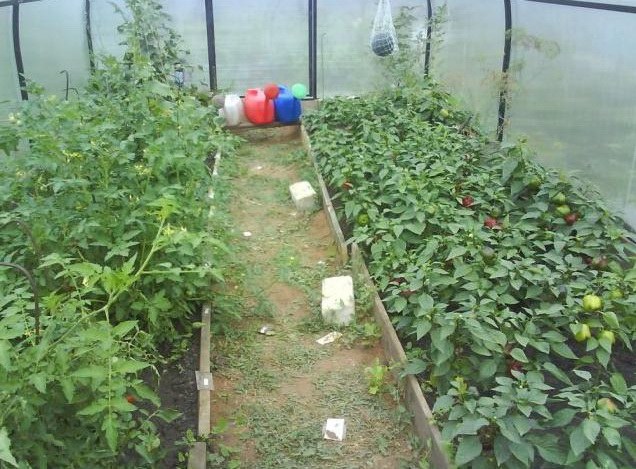You will need
- Seedlings of pepper, greenhouse, water, garden tools, fertilizers, fungicides.
Instruction
1
The advantage of pepper growing in a greenhouse is that it allows you to avoid unnecessary expenses. To begin, select varieties, according to their own preferences. Sweet peppers for growing in the greenhouse: "Tenderness", "night", "Orange miracle", "Winnie the Pooh". Sharp greenhouse varieties: "Astrakhan sort", "Elephant trunk". For sweet and bitter varieties require different greenhouses to avoid cross pollination. Selecting varieties that produce disinfection and preparation of seeds: soak them for a half hour in 1% solution of potassium permanganate, then use growth stimulants. Then sow the seeds in a box or small pots in the greenhouse to plant seedlings, only when she grows up. Pepper loves the heat: so during the growing seedlings indoor temperature can reach +30oC. After a week, lower the temperature to +18 o: thus, there is a hardening.
2
When the pepper seedlings will appear the first 3 leaves, start fertilizing. They can consist of urea, superphosphate, potassium salt. The ratio per 10 liters of water is: 0.05 kg urea, 0.125 kg of superphosphate, 0.03 kg of potassium salt. After fertilizing water the plant with clean water, thus the application of fertilizers and irrigation are combined. Do the second top dressing when the plant will be the fourth leaf.
3
Start preparing the soil in the greenhouse. Be sure to fill in the soil fertilizers: potash (0,004 kg/m2), phosphorus (0,004 kg/m2), nitrogen (0,003 kg/m2). Do not go to sleep the ground in the greenhouse with manure - this will lead to the fact that the plants are going to grow and the fruits will be small. For planting seedlings the soil in the greenhouse should be heated to 15 degrees Celsius. Planted seedlings not earlier than 55 days after sowing. The beds in the greenhouse keep at a sufficient distance from each other (100-120 cm). Make holes in the greenhouse, well pour water on them, transplant the peppers and place around the roots tamp with your hands.
4
Note that after transplanting the pepper grows the need for watering. So the time to make it. Signal indicate insufficient watering brown-red burns on the fruit. Make sure that the greenhouse was always the same temperature: sudden changes will affect the future crop. Ensure that planted seedlings have good lighting. So, the shoots will soon recruit a bright and rich color. Remember to loosen the soil and destroy weeds. So oxygen and moisture can better penetrate to the roots of the plants. Be sure to make feeding a special solution. They should, however, moderate: 1-2 times a week.
5
Of course, the cultivation of pepper in the greenhouse does not guarantee absolute protection from pests and diseases. Aphids, greenhouse whitefly, spider mites are common pests in the greenhouse. They eat the leaves and stems are already fruiting plants. For pest control spray affected plants, walkways, and aisles with this solution: for 10 liters of water 200 g of tobacco dust and 30 g of Cayenne pepper. Leave for a day, and then add 1 tbsp of liquid soap and 3 tbsp of wood ash. Of chemicals helps "Intr-VIR" (for 10 liters of one tablet) and "Arrow".
6
Pathogens in the greenhouse are divided into viral, fungal and bacterial. Often the diseases occur due to temperature changes, poor ventilation, too much moisture. The most common diseases: root rot, gray mold, powdery mildew, downy mildew, Copperhead. For struggle against illnesses helps spraying one percent solution of Bordeaux mixture, fungicides, copper-soap emulsion and other chemicals.
